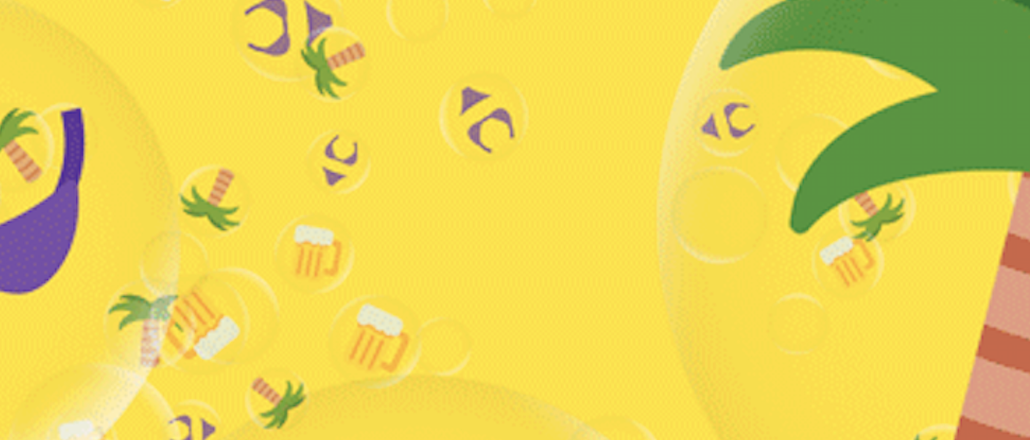
When you tweet any of these summer emojis — 😎 👙 ☀️ 🍻 🌊 🌴 — you will get customized GIF animations from @coronaextrausa featuring your emojis and a branded Corona Extra bottle emoji, ending with the hashtag #RaiseSummer. This is the beer brand’s first emoji-targeting campaign that is rolling out this week.
“Emoji targeting on Twitter helps us catch the summer spirit in a fun way. When we learned this new feature, we told Corona that let’s be the first one to do this because of the novelty,” said Rodrigo Butori, creative director for agency The Community, which designed the campaign. Corona Extra will reply with branded GIFs within two to three business days, in the form of Promoted Tweet in the News Feed. (For the record, Digiday reporters tweeted the emojis and, at press time, have not received a reply from Corona.)
Agencies and brands are often quick to glom onto the newest social media features like Instagram Stories, Facebook Live as well as phone and video chat on Snapchat. Compared to those updates, emoji targeting on Twitter — introduced by the platform back in June to “unlock unique opportunities for marketers” — seems like an abandoned child: It is not gaining traction from most agencies and brands 😿.
“Because it’s still in its infancy, I haven’t seen a ton of action on emoji targeting,” said Will Thompson, senior social strategist for agency Giant Spoon. While Thompson wouldn’t rule out Twitter’s ability to offer some creative, real-time targeting features, he hasn’t seen brands adopting emoji targeting (and analysis). Instead, clients are more willing to increase their ad spend on performance-based digital, he said.
Kelly Meyers, associate director of creative strategy for Code and Theory, thinks that emoji targeting could be useful for brands that want to target people with certain emotions around their products and services. For example, if a traveler tweets out 💩 to complain about in-flight meals provided by Airline A, then competitor Airline B could target that tweet with a post showing how great its food service is.
Ad position: web_incontent_pos1
But Code and Theory hasn’t yet leveraged emoji targeting on Twitter. “It seems like this feature is skipping ahead of other emoji optimizations that would get brands on board faster,” said Meyers.

Big ad spenders like Dove, Spotify and Starbucks all have customized emojis on Twitter, where when users tweeted with certain hashtags like #ShareACoke, they would receive branded icons like two Coke bottles. This month, Pepsi added around 50 custom-branded stickers on Twitter that allow users to overlay searchable branded emojis on top of their photos. (There is now even an emoji conference should you be interested.)
Ad position: web_incontent_pos2
While the idea of being able to target someone who just used or engaged with an emoji sounds cool, brands may not have a solid understanding of the context the emoji was used in, according to Stephen Boidock, director of social media for Drumroll.
If that’s the case, people could be annoyed if a brand tries to enter a conversation where it has no business being. “The best engagements will be with brands that have community managers evaluating the context of the emoji,” he said.
Context aside, measurement is a big hurdle, even though a growing number of ad tech companies are trying to figure out the ROI of emojis. “It’s still difficult to track or learn about emoji uses on Twitter — even some of the platform’s certified analytic partners do not render emojis or allow us to track them yet,” explained Code and Theory’s Meyers.
The Community’s Butori said that the main metric for Corona’s #RaiseSummer campaign is the number of GIF views. “Consumers are viewing our GIFs at such a high rate that our costs are 25 percent below our estimated benchmarks,” he said. “We are not even half-way through our campaign spend.”
For the time being, the brand has no plans for an emoji keyboard. ¯\_(ツ)_/¯
More in Marketing

In the marketing world, anime is following in the footsteps of gaming
As marketers look to take advantage of anime’s entry into the zeitgeist, they might be wise to observe the parallels between the evolution of anime as a marketing channel and the ways brands have learned to better leverage gaming in recent years.

With the introduction of video ads and e-commerce, Roblox looks to attain platform status
Roblox is expanding into more areas than just ads in 2024. Much like platforms such as Amazon and Facebook have transcended their origins to evolve from their origins as online marketplaces and social media channels, Roblox is in the midst of a transformation into a platform for all elements of users’ virtual lives.

PepsiCo wants to remain a ‘driver of culture’ as it turns to influencers and activations amid rebrand
The soda-maker says it can translate cultural relevance into sales volume.
Ad position: web_bfu